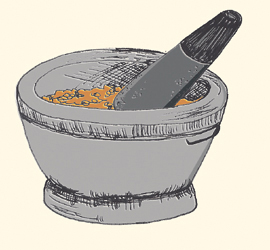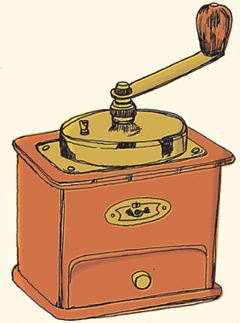
Полная версия:
Miss Masala


Dedication
This book is dedicated to the boss who said I couldn’t write.
CONTENTS
COVER
TITLE PAGE
DEDICATION
INTRODUCTION
BEFORE YOU START
1. FROM BHUNA TO BALTI
Getting to know Indian food and the very basics
Keema Mattar
Mattar Paneer
Berry Dal
Perfectly Fluffy Basmati
2. PERFECT IN NO TIME
Quick recipes for when you’d rather not be in the kitchen
Chicken Jhalfrezi
Aloo Gobi
Palak Paneer
Tadka Dal
Achari Baingan
Masala Fish
Navratan Korma
Rajma
Channa Masala
Kerala Chicken Curry
Kolmino Patio
Dal Palak
Zafrani Gosht
Chicken Pulao
3. NEVER LET YOU DOWN
Classics and favourites for every occasion – recipes to rely on!
Murgh Masala
Kosha Mangsho
Baingan Bharta
Taheri
Pav Bhaji
Chicken Kathi Rolls
Aloo Channa Chaat
Cheese Bondas
Pakoras
Rotis
Naan
4. LIGHT AND BRIGHT
Light lunches and food for warmer days
Aloo Chenchki
Paneer Bhujia
Bean Salad
Hariyali Murgh
Lamb Korma
Dosakaya Pappu
Seekh Kebabs
Tandoori Macchli
Paneer Shashlik
Hariyali Tikkis
Lamb Chaaps
Bharwan Shimla Mirch
5. SHOWING OFF
Recipes for special occasions and for impressing guests
Cholar Dal
Paneer Butter Masala
Patra ni Macchi
Chingri Malai Curry
Bhoger Khichuri
Beguni
Quick Lamb Biryani
Anda Raita
Jardaloo Sali Boti
Murgh Makhani
Peshawari Naan
Dal Tikkis
Murgh Malai Kebabs
Vodka Chilli Cocktails
6. FOOD FOR FEELING BETTER
Pick-me-ups for all your woes
Parathas: Aloo, Gajar and Mooli
Maacher Cutlets
Khichdi
Doi Maach
Masala Chai
Two Rasam Recipes
Tomato Rasam
Pepper Rasam
Dahi Bhaat
Jeera Chicken
Prawn Pulao
Maacher Chop
Mutton Ishtew
7. SWEET INDULGENCES
Irresistible ways to get a sugar high
Kesar Pista Burfis
Besan Laddoos
Narkel Narus
Carrot Halwa
Rose and Vanilla Firni
Payesh
Bhapa Doi
Chilli Chocolate Brownies
Kulfi
Mango Fool
Shrikhand
GLOSSARY
ACKNOWLEDGEMENTS
COPYRIGHT
ABOUT THE PUBLISHER
INTRODUCTION
Squashed on a train unfit for cattle transport, in an Austin Reed suit and Kurt Geiger heels, I can think about only one thing. Rotis. Round, soft, fluffy rotis.
This is my life: 30-something girl about town, corporate superbitch and keen Indian cook. Ten years ago, just the thought of combining the three would have thrown me into a blind panic, and had me reaching for the nearest chicken tikka sandwich pack.
You see, growing up in India, I cared more about eating food than cooking it. Tantalising meals were assembled at home (although not by me) with little oil, fresh ingredients and lots of imagination, all served with limes, coriander, pickle and green finger chillies. From sweet coconut prawn curry and juicy tandoori chicken to buttery Tadka Dal and spicy-sour aloo. It was all accompanied by puffed rotis rolled and tawa-baked by our masterly cook, Dada. Oblivious to his talent, we two bespectacled sisters ate them hot, dripping with the butter we wore so proudly as lip-gloss at the dining table.
Dada was on an everyday mission – to keep it simple but delicious. As in most other Indian homes, aromatic pulaos, rich curries and deep-fried goodies were strictly reserved for weekends and special occasions. Then, Dada would turn sous-chef to my father and his elaborate kitchen feats. A keen and superb cook, my chain-smoking dad’s speciality was the rice delicacy biryani. It always arrived late from a battle-ravaged kitchen.
Mother, unlike my many aunties, stayed well away from the hotbed of fiery tempers and masalas that was our Kolkata kitchen. Dabbling with the occasional spaghetti Bolognese in her psychedelic kaftan, she preferred directing and overseeing Dada’s glorious Indian meals rather than troubling her good self by actually cooking them.
When I decided to leave it all behind for university in England, nobody thought to disrupt my hectic schedule of debates and rooftop parties with lessons in cooking Aloo Gobi. I arrived in rainy Buckingham, and plunged headlong into an undergraduate degree in business studies and an education in how not to eat. My experiments in the kitchen were short-lived. The burnt frozen pizzas. The tins that exploded in the microwave. The boil-in-the-bag rice that never quite cooked.
I didn’t give a damn. The 90s clubbing scene was exploding around me. My love life and my finances were imploding. Homemade chicken curry was hardly going to see me through it all. Besides, I was about to embark on a master’s degree in journalism. The future would be all about sharp suits, dictaphones, black cabs and mojitos. A far cry from the hair-in-bun, handloom-cotton image I had of aunties and seasoned cooks back home.

But after years of Taj Mahal takeaways and petrol station cuisine, I started aching for some good home-cooked food. I had no idea where to start, however. I needed help.
So I asked someone who had all the answers. Mother. She sent me a copy of the National Indian Association of Women Cookbook, given to newly wedded daughters, the soon-to-live-abroad and other hapless beings.
Armed with this seminal tome, I was ready to become Miss Masala. So what if I now worked long hours in London, spent evenings sampling cheap wine and didn’t know the first thing about cooking Indian food? It couldn’t be that difficult, right?
Wrong.
You see, professional Indian cooks can be a canny lot. Always happy to give you a quick breakdown of ingredients, they withhold some of the crucial basics. Perhaps as payback for all their hard graft as beginners. Aunties, on the other hand, are only too happy to oblige with recipes. But years of experience mean they use andaaz, giving little idea of quantities. Directions like ‘Cook the onions, add some turmeric and fry with a bit of garam masala’ are no good to a novice. We need specifics.
Most Indian cookbooks are no place for beginners, either. They assume the sort of basic knowledge I simply didn’t have, or expect a little too much in the way of free time. Instructions like ‘Soak overnight and then simmer for 3 hours’ scared me half to death.
Then you have the ingredients to contend with. Indian cooking uses a seemingly endless array of specialist spices, and the magic each one brings to a dish is a mystery of Bollywood-epic proportions. Like the foul-smelling asafoetida – a deeply offensive powder but which, once cooked, infuses dishes with a magical buttery flavour.
And finally there are all those secrets you can learn only from experience. No one ever tells you, for instance, that ready-made channa masala powder plus frying onions equals three days of spicy sofa. Or that fresh curry and methi (fenugreek) leaves can be frozen for months and still retain their flavour.
Altogether it’s a quagmire for the uninitiated. Thankfully, I craved the food enough to wade through it all. It was my labour of love – aided by the NIAW Cookbook, numerous international phone calls and Smirnoff vodka.
I started cooking for anyone who dared to sample it – whether keen colleague, hesitant sister or bewildered boyfriend. Low-oil and high-nutrient recipes from back home provided early inspiration, with a vindaloo or two thrown in for good measure. I was on the quest for mouth-watering dishes that I could rustle up after numbingly long days and harrowing weeks at work.
Along the way, I got married and dived into a public relations career. The art of frying onions to the perfect shade of gold now had to be combined with the science of juggling client deadlines with a hungry husband, lavish Indian functions and late-night partying. Time officially became money. Shortcuts de rigueur.

I have learnt lots of valuable lessons. That cooking when drunk is not a good idea, for instance. Especially when it’s your boss who is waiting to be fed. That I would rather eat my shoe than make a samosa from scratch. And that making round, fluffy rotis plays havoc with manicured fingernails.
Most importantly, I have learnt that authentic Indian cooking is, in fact, blindingly easy and can be a regular part of frantic lives. To make gloriously aromatic pulao and creamy korma, all you need are simple recipes and basic know-how. Once you crack the essentials, the rest is a piece of chappati.
This book is all about those invaluable lessons, transferred from my kitchen to yours. It’s about loving Indian food and cooking it from scratch while enjoying too many cocktails, after a steamy commute and faced with an empty fridge. The pages that follow are packed with simple recipes and handy tips for busy people who live full lives.
On some occasions an easy masala dinner will usually do the trick. But there are other nights when only a rich curry, served with heaps of basmati rice and lashings of dal and raita, will hit the spot. This book caters for such moments, whatever your mood, taste or time constraints. There are recipes for when time is of the essence, others that are big-crowd pleasers and ones for your own indulgence.
You, too, can keep it simple with quick Chicken Jhalfrezi on a bed of peppery salad leaves. Impress colleagues with a three-course dal, curry and sabzi combo. Hang out with friends, a few bottles of wine and heaps of melt-in-the-mouth lamb kebabs. And recover from it all with comforting rice Khichdi, aubergine raita and delicious little coconut bites.
Slip on your heels, keep a pair of old pyjamas handy and open your mind.
This is real Indian cooking for busy living!
Before You Start – Read This
Are you feeling somewhat inspired? Ready to take on the challenge of Indian home cooking? Have you dusted off the oversize aluminium stockpot, normally reserved for deadly punches, to make your own ghee? Invested in an industrial pestle and mortar? Convinced yourself that fermenting and sun-drying your own lime pickle is time truly well spent?
Shame.
This cookbook isn’t into that sort of thing. I want to cook traditional Indian food and have a life. So, in a step change from time-honoured Indian cooking tradition, I blatantly advocate the use of store-bought ingredients, dinky gadgets and shortcuts. If you are a tad busy or lazy, this book is just the thing for you.
The first chapter introduces the very basics and other useful information. Tips and tricks are littered throughout the rest of the book, amongst my stories and introductions to the recipes. To avoid boring you stiff by repeating myself in the recipe descriptions, I’ve collected a handful of cooking tips here. Please do read these before you begin.

SOURCING INGREDIENTS
Indian spices can be bought in supermarkets, at ethnic shops or online. You could even sweet-talk your local corner shop into stocking a wide selection. And once you’ve bought them, you can put them to use in many different dishes, from all sorts of cuisines. If you don’t have one or two of the spices specified in a dish, leave them out rather than use a substitute. Omitting a couple of the ingredients isn’t going to dramatically alter the flavour of a dish. Just make sure you have the main ingredients that feature in the title or subtitle of a recipe.
A FEW WORDS ON SOME COMMONLY USED INGREDIENTS AND EQUIPMENT:
LENTILS The different types called for in Indian cooking are many and various but not really interchangeable. For more on the different varieties, see the box.
CARDAMOMS Green cardamoms are most commonly used in the recipes in this book. Occasionally brown cardamoms (also known as black cardamoms) are called for. These can’t be used instead of green cardamoms, however, as they have a completely different, smoky taste.
PANEER This Indian cheese is used in a number of the recipes. It’s widely available in the hard cheese section of supermarkets. You could, at a pinch, substitute it with low-fat halloumi.
CURRY LEAVES Buy these herbs in an ethnic store or the ethnic section of your local supermarket. You can use them fresh or keep a bag in the freezer and cook straight from frozen. Never use the dried leaves; they’re just not the same.

GREEN FINGER CHILLIES These have a very particular flavour and can’t be substituted with any other type of green chilli. If you have a problem sourcing them, buy a jar of ready-minced green chillies to keep for emergencies.
CHILLI POWDER AND WHOLE CHILLIES While on the subject on chillies, I always use extra-hot chilli powder. The milder stuff doesn’t seem worth the effort, frankly. I don’t deseed chillies, either. Why, when the seeds are packed with serious punch? I’m not a great fan of super-spicy food, so my recipes are on the milder side, unless otherwise stated. If you can handle it, go crazy with chillies. For more on the different types of chillies used in Indian cooking, see the box. Note: bell peppers are deseeded.
YOGHURT This features extensively in Indian curries, often used to thicken curries or as a creamy, but lower fat alternative to cream. Low-fat yoghurt used straight out of the fridge will almost inevitably curdle when it touches hot oil. Use Greek yoghurt instead, which has a higher fat content, and leave it on the worktop to get it closer to room temperature before cooking. This will save your curry.
FAN-ASSISTED OVENS Most Indian food is cooked on the hob. Where I cook a dish in the oven, I’ve put the temperature in Centigrade/Fahrenheit and for gas. If you have a fan-assisted electric oven, please deduct approximately 20°C (70°F) from the temperature given in the recipe and cook for the same length of time. In any case, it’s always worth checking the food is cooked before you serve it.
MEASURING WITH MUGS Everyone has a mug or cup set aside to measure rice. I use a great big builder’s mug, which gives me 350g (12oz) rice – four generous portions. When I’m cooking rice or lentils, I state the amount of water needed in the form of a ratio of water to rice/lentils, e.g. ‘one-and-a-half times as much water as rice’ or ‘twice as much water as lentils’. By using the same mug/cup, you have an easy and accurate way of adding just the right volume of water. Always check the rice with a fork at the end of cooking. Depending on its quality, you may sometimes need to add an extra half a cup of hot water to get it cooked just right.
ESSENTIAL GADGETS Pestles and mortars are wonderful. But I’m not keen on bits of garlic, ginger and whole spices flying into my hair, face and clothes. A cheap mini electric coffee grinder works wonders to powder roasted spices. A hand blender can purée ingredients in seconds, without taking up much shelf space in the kitchen. See the box on how to make your own ginger and garlic pastes.

COOKING OILS You’ll see that I generally don’t specify a particular type of cooking oil. You can use any type of neutral flavour oil (sunflower, vegetable, groundnut, etc.), just not olive oil. For more on this, see the box.
PRECOOKING VEGETABLES Try not to parboil or shallow-fry vegetables before cooking them. It is too much extra effort and you lose their essential nutrients. Also, the longer veggies get with the spices, the better they will taste.
COOKING ON A HIGH HEAT I tend to cook over a high heat on the hob, so that the ingredients cook more quickly. But do reduce the heat slightly if a pot is boiling too vigorously or fried ingredients are browning too quickly and in danger of burning.
A WORD ON SALT I consume far too much salt. Which, I’ve been led to believe, will cause me untold grief in the form of hideous illnesses before I turn 40. I’ll spare you a similar fate by leaving salt addition in my recipes to your own discretion. The best thing to do is add a little at a time right at the end of a recipe until you get it to taste just the way you like it.
INDIAN COOKING TERMS To help with the strange Indian words that pepper these pages, just turn to the glossary at the back of this book.
AND LASTLY Please don’t worry if your chicken curry doesn’t match the exact shade of sienna orange in the fancy photograph. The hue of your home-cooked feast will depend on the brand of spices, type of ingredients and the lighting in your kitchen. As always, it’s the taste that counts.
Now for the rest. Happy cooking!
1.
FROM BHUNA TO BALTI
Getting to know Indian food and the very basics
Miss Masala.

ACHIEVING ‘AUNTYDOM’ WAS NEVER GOING TO BE EASY.
Such high standards. So many spices, so little time. No information on what they actually do. Or how best to use them, for that matter. I started my quest with a trip to the nearest aunty, conveniently located in Birmingham – epicentre of the British curry phenomenon.
The door flew open and Aunty launched into high-pitched squawks about how thin I looked. In my family, being thin is considered an even worse fate than left-handedness, singledom or unemployment. More cries of ‘gaunt/tired/malnourished’ were the cue for me to step into the kitchen where Aunty, a senior Indian Diplomatic Officer, had laid out a dazzling four-piece, home-cooked meal.
Aunty lamented the sorry state of the Indian government, the rise of the balti and the problem with young people today. I worked my way through the coconut and raisin dal, chilli pumpkin stir-fry and spicy chicken curry, agreeing and wondering what possessed me to aspire to such dizzying culinary heights.
If Aunty was to be believed, everything was ‘so easy to make’. The dishes, authentic recipes passed down from her great-great-grandmother’s north Kolkata kitchen, took ‘no time at all’. My hopes were fading fast, like the empty space in my rapidly filling stomach.
But I dared not mention this to her. The size-eight-one-who-was-wasting-away would need to be comatose or sick before she was allowed to stop eating. I contemplated faking a fainting spell as she heaped more basmati rice on to my plate.
The next day, we visited a local curry house. Inspired by the delights of the previous night’s authentic Indian meal, I took a fresh, critical look at the fare that had, until now, been my happy respite from three-for-a-fiver microwave meals. I reflected on several interesting things:
1. The word ‘curry’ means ‘sauce’ or ‘gravy’ in India. In the UK, on the other hand, it’s used as a generic term for pretty much all Indian, Pakistani and Bangladeshi food. Not all our dishes are curries – there are bharta, bhuna, tandoori and kadai dishes, and many others besides. In a nod to popular British culture, however, I have used the words ‘curry’ and ‘Indian food’ interchangeably throughout this book.
But don’t get me on to balti, which means ‘bucket’. Fancy dinner out of a bucket? Me neither. Some say balti originated from the Kashmiri province of Baltistan. The truth is that the word was coined by a clever Brummie and has as little to do with cooking as my ceramic hair irons.
2. This creativity extends to restaurant menus. Many of the popular British curry dishes don’t exist in India. Such as phal (mouth-numbingly hot), madras (fluorescent red and gloopy), and chicken tikka masala (no description needed). The perfect greasy end to an alcohol-ridden evening they are. Indian they are not.
Interestingly, chicken tikka masala has had the rare privilege of infiltrating many restaurant menus in India. It is based on a far more delectable, decadent and diet-defying dish, Murgh Makhani (also known as ‘butter chicken’), which is sadly harder to find in the UK.
3. The range of dishes at a standard local curry house is pretty limited. The same cubes of pre-prepared meat are stirred into a set number of curries, depending on what you fancy. Where are the sweet, light Bengali curries? The coconut-filled south Indian dishes? The rich, spicy feasts from Mughal-inspired Hyderabad and Lucknow? And the famous fusion cuisine of the Parsis and Goans? Even the few recognisably Indian dishes on the menu are transformed beyond recognition before they arrive at the table.
MY MOST HATED UK CURRY LINGO
Naan bread
Naan is bread, so this translates as ‘bread bread’. Plain wrong.
Pulao rice
‘Pulao’ means ‘flavoured rice’. I rest my case.
Poppadom
In Hindi, this is ‘papad’, which is conveniently shorter.
IT WAS TIME FOR ME TO SACRIFICE MY LOVE of the local takeaway on the altar of authentic Indian home cooking. Aunty sent me off with a 20-piece dinner set from the local cash and carry. I returned to my ex-council apartment and promptly made my way to the inventively named ‘Indian Spice Shop’ in Euston.

